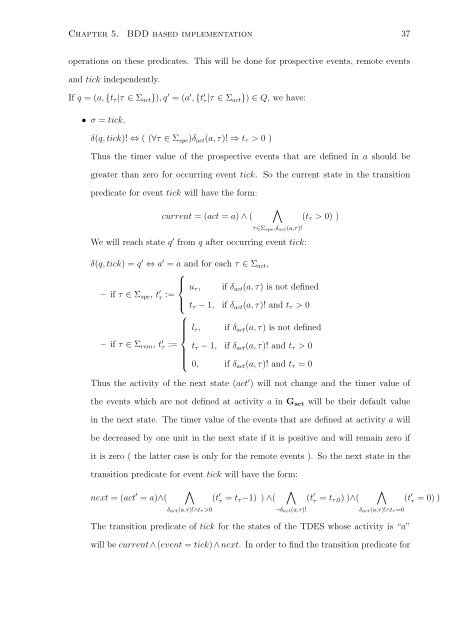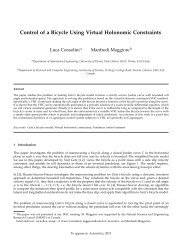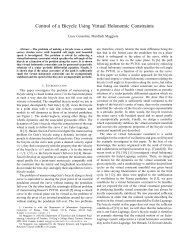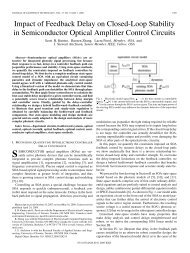State Based Control of Timed Discrete Event Systems using Binary ...
State Based Control of Timed Discrete Event Systems using Binary ...
State Based Control of Timed Discrete Event Systems using Binary ...
You also want an ePaper? Increase the reach of your titles
YUMPU automatically turns print PDFs into web optimized ePapers that Google loves.
Chapter 5. BDD based implementation 37operations on these predicates. This will be done for prospective events, remote eventsand tick independently.If q = (a, {t τ |τ ∈ Σ act }), q ′ = (a ′ , {t ′ τ|τ ∈ Σ act }) ∈ Q, we have:• σ = tick.δ(q, tick)! ⇔ ( (∀τ ∈ Σ spe )δ act (a, τ)! ⇒ t τ > 0 )Thus the timer value <strong>of</strong> the prospective events that are defined in a should begreater than zero for occurring event tick. So the current state in the transitionpredicate for event tick will have the form:current = (act = a) ∧ (∧τ∈Σ spe,δ act(a,τ)!We will reach state q ′ from q after occurring event tick:(t τ > 0) )δ(q, tick) = q ′ ⇔ a ′ = a and for each τ ∈ Σ act ,⎧⎪⎨ u τ , if δ act (a, τ) is not defined– if τ ∈ Σ spe , t ′ τ :=⎪⎩ t τ − 1, if δ act (a, τ)! and t τ > 0⎧l τ , if δ act (a, τ) is not defined⎪⎨– if τ ∈ Σ rem , t ′ τ := t τ − 1, if δ act (a, τ)! and t τ > 0⎪⎩ 0, if δ act (a, τ)! and t τ = 0Thus the activity <strong>of</strong> the next state (act ′ ) will not change and the timer value <strong>of</strong>the events which are not defined at activity a in G act will be their default valuein the next state. The timer value <strong>of</strong> the events that are defined at activity a willbe decreased by one unit in the next state if it is positive and will remain zero ifit is zero ( the latter case is only for the remote events ). So the next state in thetransition predicate for event tick will have the form:next = (act ′ = a)∧(∧δ act (a,τ)!∧t τ >0(t ′ τ = t τ −1) ) ∧(∧¬δ act (a,τ)!(t ′ τ = t τ,0 ) )∧(∧δ act (a,τ)!∧t τ =0The transition predicate <strong>of</strong> tick for the states <strong>of</strong> the TDES whose activity is “a”will be current ∧ (event = tick) ∧ next. In order to find the transition predicate for(t ′ τ = 0) )







